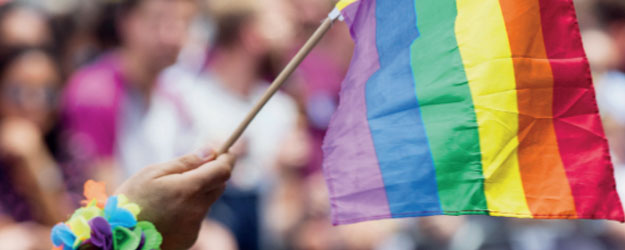Aegon Center for Longevity and Retirement (ACLR) conducted its first international survey on retirement aspirations and planning among the LGBT community.

Findings show that all people, irrespective of their sexuality or gender identity, want to pursue the retirement dreams of more leisure, freedom and a sense of enjoyment. But the road traveled by LGBT people to reach that destination is often quite different from that taken by heterosexuals.
This survey includes workers and retirees from nine countries: Australia, Brazil, Canada, France, Germany, The Netherlands, Spain, the United Kingdom, and the United States.
"Great steps have been taken in recent decades with regard to legal protections, and social and workplace inclusion for members of the LGBT community. However, the legacy of discrimination and worries about social acceptance mean that LGBT people still fall behind in important areas when it comes to preparing for retirement." says Mike Mansfield – Program Director Aegon Center for Longevity and Retirement.
Key LGBT retirement findings
Key findings in the survey from the LGBT: Retirement Preparations Amid Social Progress report include:
LGBT people lead more solo lifestyles throughout adulthood, and this is reflected in their views on how they will spend their retirement.
- Forty percent of LGBT people are single compared to 22 percent of heterosexuals.
- Only 37 percent of LGBT people have dependent children compared to 43 percent of heterosexuals.
- Among the LGBT community 45 percent expect to spend time with their family and friends when they retire compared to 56 percent of heterosexuals.
- LGBT workers are more likely to think that in their own retirement they will need to provide financial support to their aging parents (22 percent) compared to heterosexuals (15 percent).
LGBT workers may still face open and subtle discrimination that denies them the same opportunities in the workplace as heterosexuals.
- Across the nine countries surveyed, median earnings for LGBT households are around 8 percent less per year than heterosexual households.
- The gap is even wider among LGBT women who have a household income that is 17 percent less than that of heterosexual women and 27 percent less than heterosexual men.
Differences remain in how people in the LGBT community prepare for retirement and how it actually occurs.
- LGBT workers lag behind their heterosexual peers in terms of the percentage who say that they are always saving for retirement (37 percent compared to 41 percent).
- Positively, LGBT workers are more likely than heterosexual workers to have formulated a retirement plan in writing (20 percent compared to 16 percent).
- Fifty-five percent of LGBT retirees retired sooner than they planned compared to 45 percent of heterosexuals and the most important reason for doing so was ill-health (39 percent of LGBT retirees compared to 32 percent of heterosexual retirees).
"Our research shows that while great progress has been made, there is still a lot of work to be done. Governments and employers should formulate laws and workplace policies that contain inclusive language relating to sexual orientation and gender identity. Furthermore, employers should ensure that their retirement savings plans permit all workers to make 'catch-up' or additional contributions to compensate for insufficient retirement savings now or in the past." says Mansfield.
Policies for Equal Ageing conference
Aegon is looking forward to Mike Mansfield's discussing key findings from this report at the High-Level Conference on Policies for Equal Ageing: A Life-Course Approach jointly organized by the Government of Slovenia and the Organisation for Economic Cooperation and Development (OECD) on January 25, 2018.
This new report is a joint effort of the Aegon Center for Longevity and Retirement, and nonprofits Transamerica Center for Retirement Studies® and Instituto de Longevidade Mongeral Aegon.